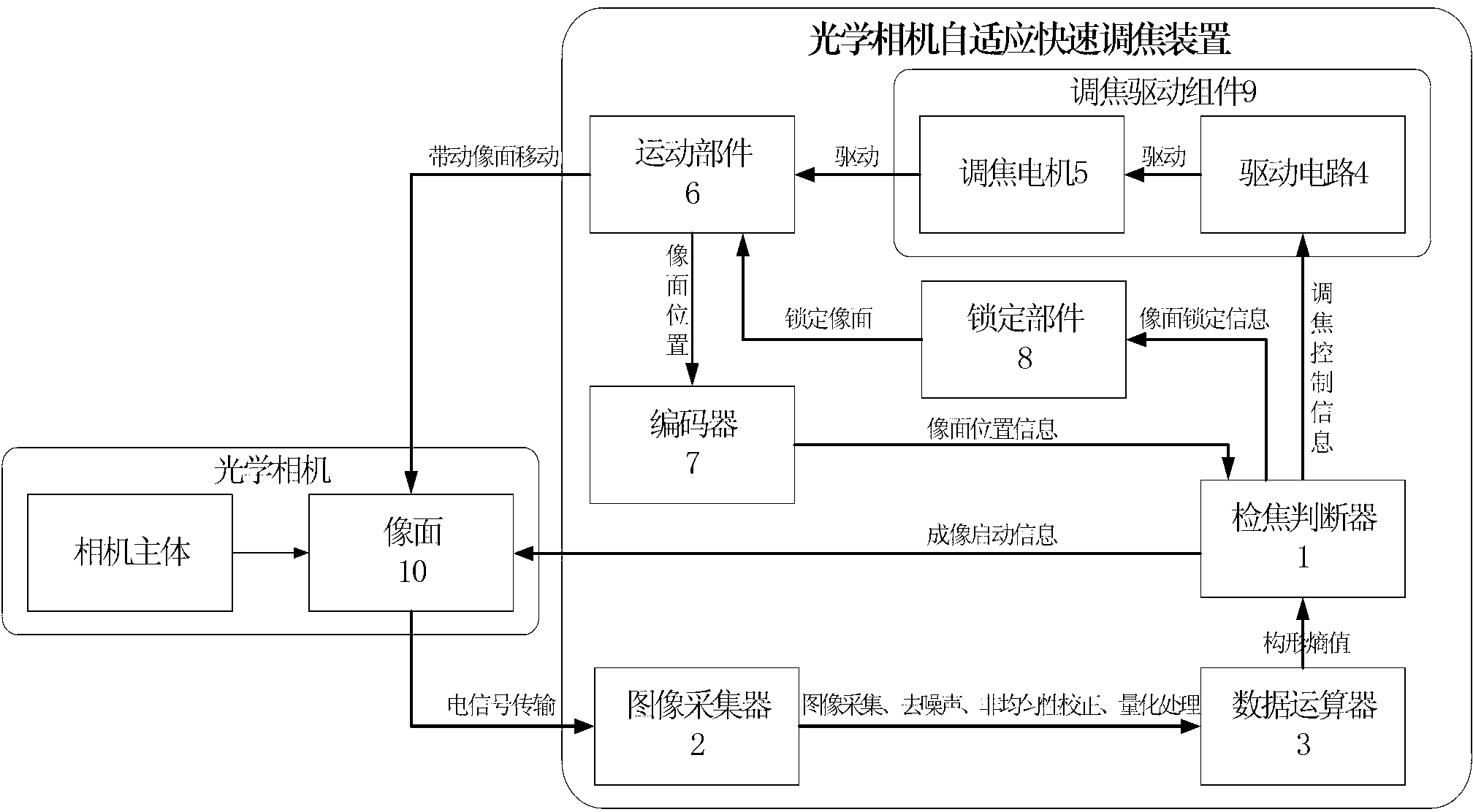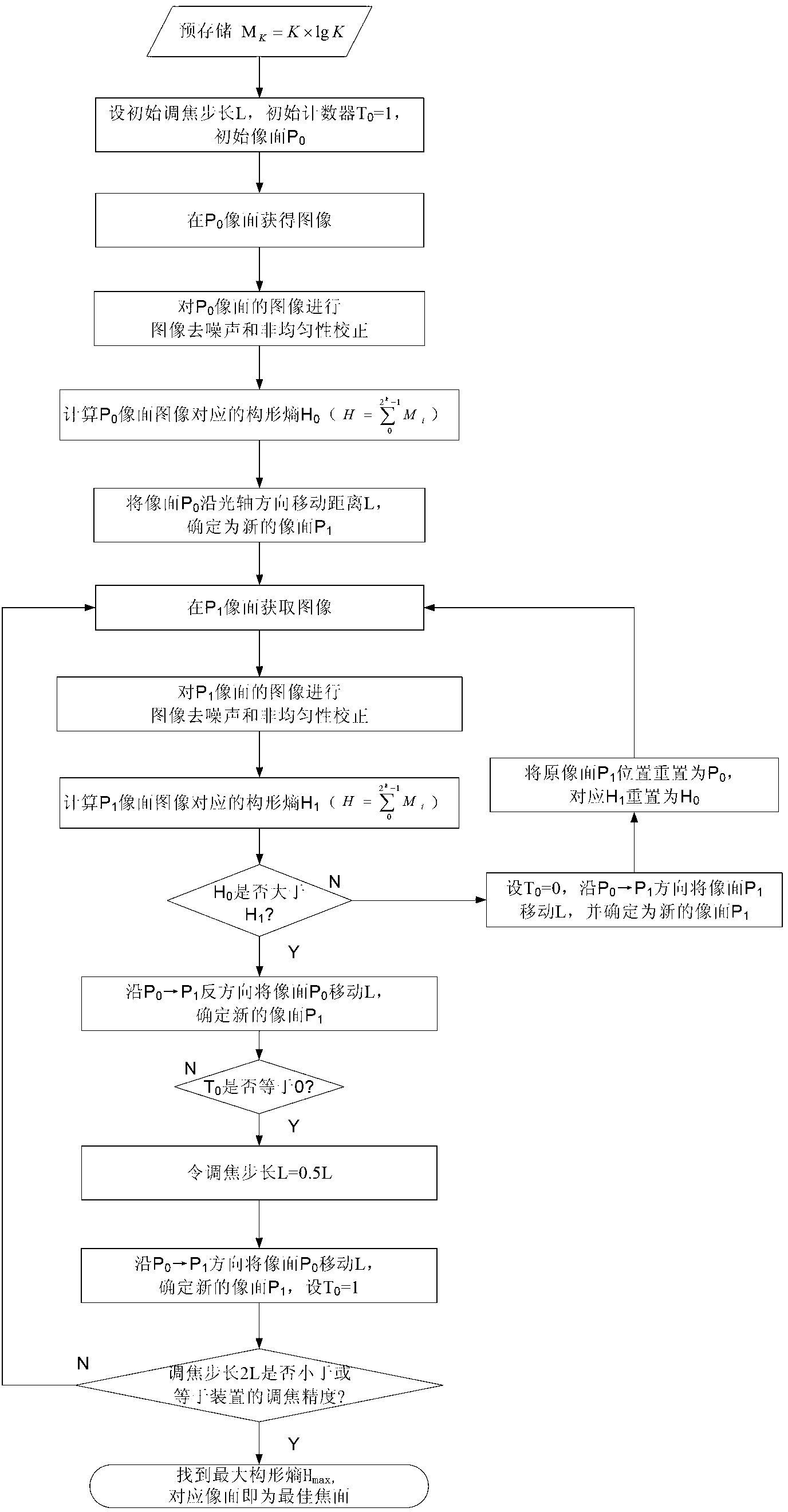Adaptive quick focusing device and method for optical camera
An optical camera and self-adaptive technology, which is applied in the field of aerospace optical remote sensors, can solve the problems that the focusing effect depends on the richness, the imaging conditions are high, and the focus cannot be automatically adjusted, so as to reduce the number of mechanical movements and improve the focusing accuracy , Reduce the effect of focusing calculation
- Summary
- Abstract
- Description
- Claims
- Application Information
AI Technical Summary
Problems solved by technology
Method used
Image
Examples
Embodiment Construction
[0031] The invention is suitable for an optical camera whose image surface is adjusted back and forth along the optical axis direction to realize the focusing function.
[0032] According to Shannon's information theory, when the probability of an event is smaller, its prior uncertainty is greater and the amount of self-information contained is greater. The total number of pixels in the image plane of the CCD optical camera is a constant l×m, which defines the gray value i in the image (i=0,1,2,…2 k -1, k is the number of quantization bits, for example, k=8, the gray value range is 0~255) The total number of pixels corresponding to N is N i , The frequency that appears in the image is definition:
[0033] H = - X 0 2 k - 1 p ( i ) lg p ( i )
[0034] when At the smallest hour, the image is in focus and the image is clearest.
[0035] H = - X 0 2 k - 1 N i l X m lg N i l X m ...
PUM
 Login to View More
Login to View More Abstract
Description
Claims
Application Information
 Login to View More
Login to View More - R&D
- Intellectual Property
- Life Sciences
- Materials
- Tech Scout
- Unparalleled Data Quality
- Higher Quality Content
- 60% Fewer Hallucinations
Browse by: Latest US Patents, China's latest patents, Technical Efficacy Thesaurus, Application Domain, Technology Topic, Popular Technical Reports.
© 2025 PatSnap. All rights reserved.Legal|Privacy policy|Modern Slavery Act Transparency Statement|Sitemap|About US| Contact US: help@patsnap.com



